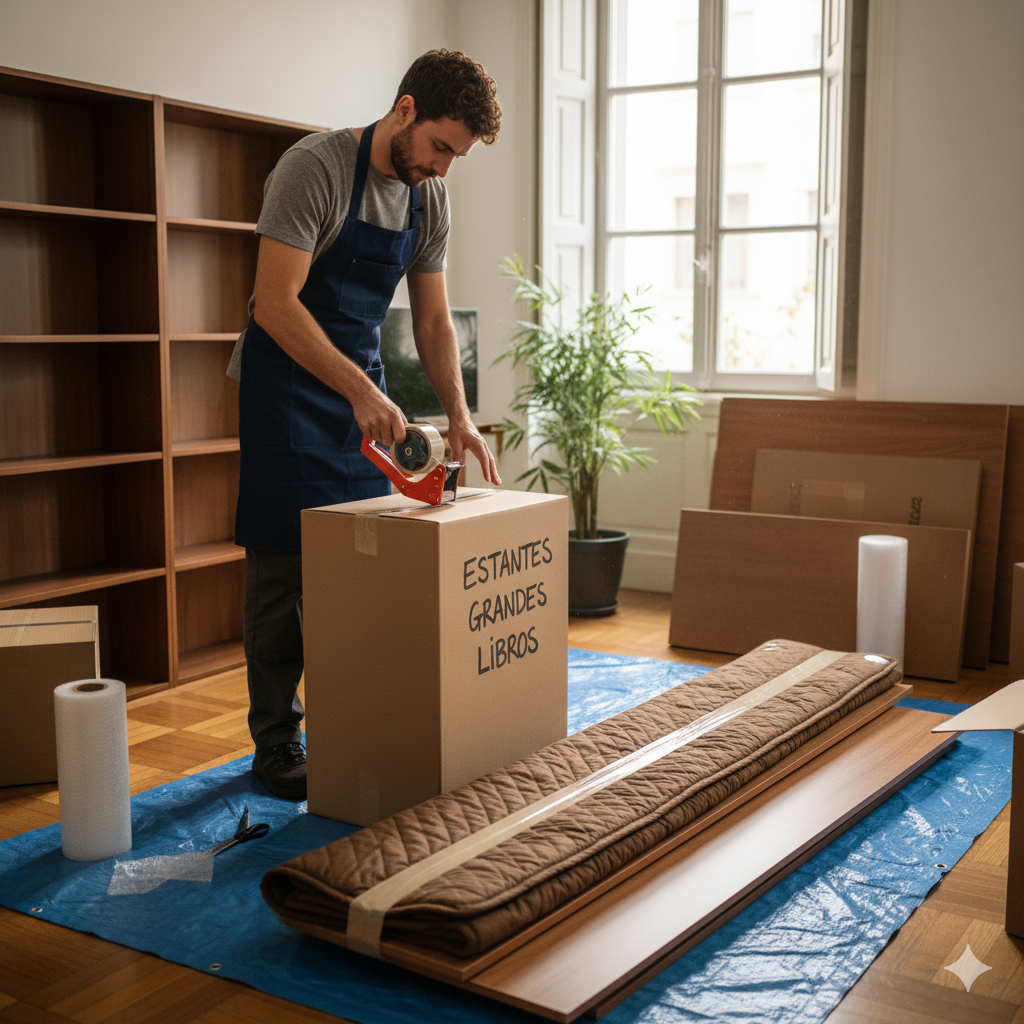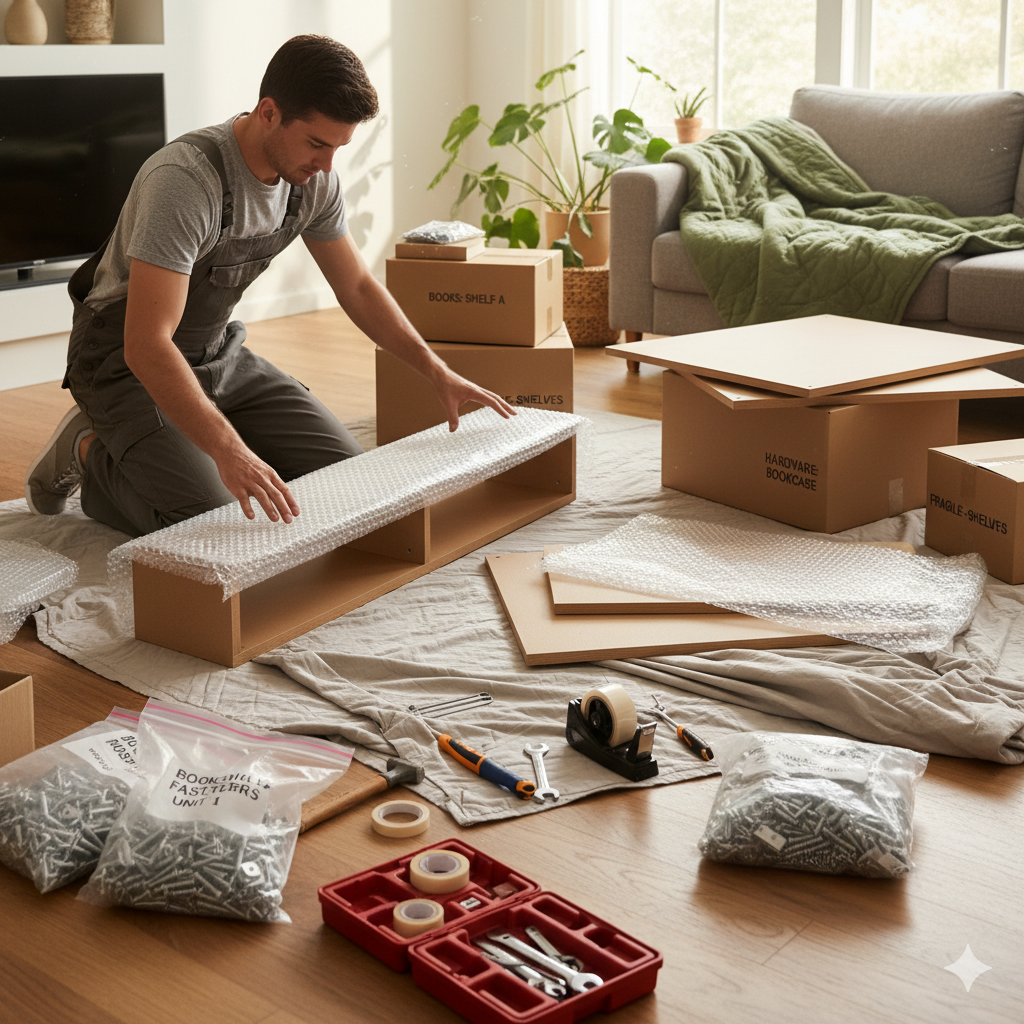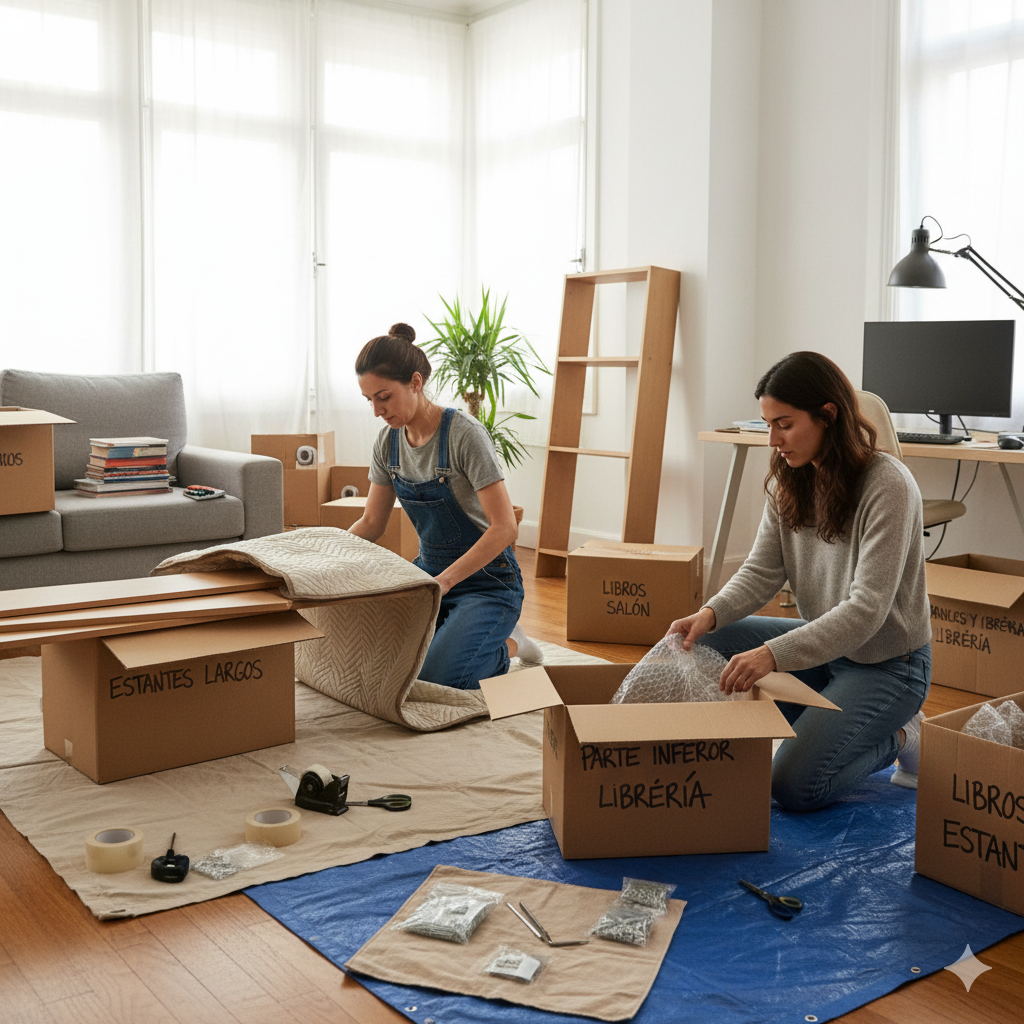Learn step by step how to disassemble and pack your furniture like a professional to avoid damage and complications during the move. Complete guide with expert tips.

Professional furniture disassembly with organized tools and protective materials
A move can be easier than it seems... if you know where to start. Properly disassembling and packing your furniture is crucial to protect your belongings and avoid damage to both objects and yourself.

Documentation and organization of tools before disassembly
Take photos from different angles. This will help you remember how to reassemble the furniture and locate specific pieces.
Use airtight bags and labels with the furniture name. You can tape the bag to the main panel.

Professional furniture protection with packaging materials
Use blankets, cardboard, bubble wrap and transparent film. Prioritize corners and edges, which are more vulnerable to impacts.
Remove dust before packing to avoid scratches from abrasive particles.
Put the furniture name, if it's fragile, its weight, and the destination room. This facilitates transport and assembly.
Having the right tools makes disassembly more efficient and safe.
Tips from professionals with years of experience in moves and furniture disassembly.
Start 2 weeks before the move. Begin with less essential furniture and leave for last those you use daily.
Reserve 2-3 hours per complex piece of furniture. Large wardrobes may require up to 4 hours of careful disassembly.
Always disassemble in reverse order of assembly: first accessories, then doors, then structure, and finally the base.
For furniture with glass, disassemble the panels first and pack them separately. Use double protection on corners.
Our professionals can help you with disassembly, transport and assembly of your furniture. Guaranteed service and transparent prices.